1mg
Showing 2001–2050 of 5094 results
-

Avenanthramide C
$94.01 Add to cart View Product DetailsMolecular Formula : C16H13NO6
-
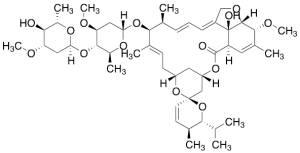
Avermectin A1b (>85%)
$643.43 Add to cart View Product DetailsMolecular Formula : C48H72O14
-

Avibactam Sodium Salt
$42.26 Add to cart View Product DetailsMolecular Formula : C7 H10 N3 O6 S . Na
-

Axitinib Iodo Tetrahydropyran
$199.24 Add to cart View Product DetailsMolecular Formula : C19 H20 I N3 O
-
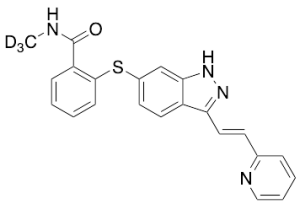
Axitinib-d3
$1,423.13 Add to cart View Product DetailsMolecular Formula : C22 D3 H15 N4 O S
-
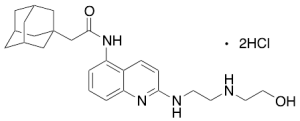
AZ 10606120 Dihydrochloride (~90%)
$100.91 Add to cart View Product DetailsMolecular Formula : C25H34N4O2 • 2(HCl)
-

AZ 5104 Hydrochloride
$79.35 Add to cart View Product DetailsMolecular Formula : C27H31N7O2 . HCl
-
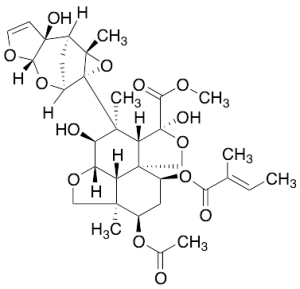
Azadirachtin D
$163.88 Add to cart View Product DetailsMolecular Formula : C34H44O14
-
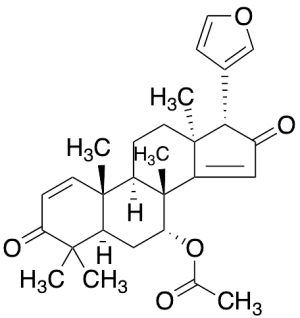
Azadiradione (~90%)
$227.70 Add to cart View Product DetailsMolecular Formula : C28 H34 O5
-
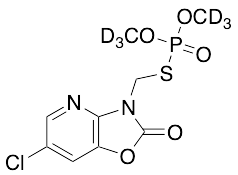
Azamethiphos-d6
$227.70 Add to cart View Product DetailsMolecular Formula : C9 D6 H4 Cl N2 O5 P S
-

Azapropazone
$524.40 Add to cart View Product DetailsMolecular Formula : C16 H20 N4 O2
-
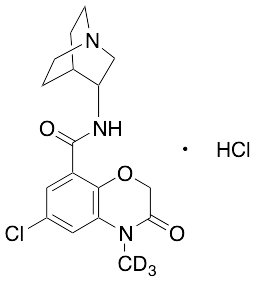
Azasetron-D3 Hydrochloride
$258.75 Add to cart View Product DetailsMolecular Formula : C17 2H3 H17 Cl N3 O3 . Cl H
-

Azathioprine-d3
$231.15 Add to cart View Product DetailsMolecular Formula : C9H4D3N7O2S
-

AZD5363
$56.06 Add to cart View Product DetailsMolecular Formula : C21 H25 Cl N6 O2
-

AZD6738
$53.48 Add to cart View Product DetailsMolecular Formula : C20H24N6O2S
-
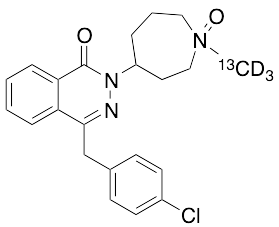
Azelastine-13C,d3 N-Oxide (Mixture of Diastereomers)
$176.81 Add to cart View Product DetailsMolecular Formula : C2113CH21D3ClN3O2
-
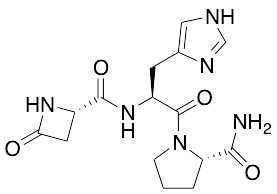
Azetirelin (~85%)
$176.81 Add to cart View Product DetailsMolecular Formula : C15H20N6O4
-

Azido-erythro-sphingosine
$131.10 Add to cart View Product DetailsMolecular Formula : C18 H35 N3 O2
-
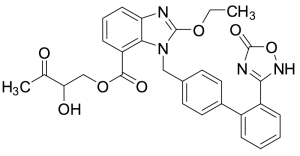
Azilsartan-2-hydroxy-3-oxobutyl acetate
$176.81 Add to cart View Product DetailsMolecular Formula : C29 H26 N4 O7
-
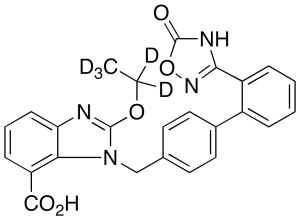
Azilsartan-d5
$269.96 Add to cart View Product DetailsMolecular Formula : C25 H15 D5 N4 O5
-

Azilsartan-d5 Methyl Ester
$192.34 Add to cart View Product DetailsMolecular Formula : C26H17D5N4O5
-
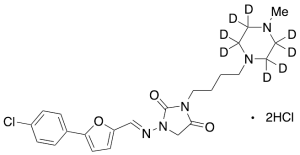
Azimilide-d8 Dihydrochloride
$220.80 Add to cart View Product DetailsMolecular Formula : C23H22D8Cl3N5O3
-
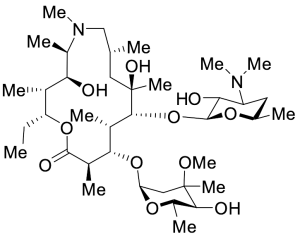
Azithromycin B
$390.71 Add to cart View Product DetailsMolecular Formula : C38H72N2O11
-
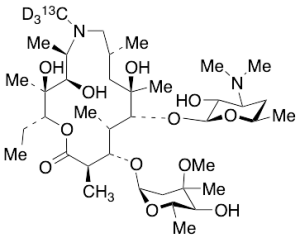
Azithromycin-13CD3
$303.60 Add to cart View Product DetailsMolecular Formula : C3713CH69D3N2O12
-

Azithromycin-d3
$190.61 Add to cart View Product DetailsMolecular Formula : C38 2H3 H69 N2 O12
-

Azithromycin-d5
$292.39 Add to cart View Product DetailsMolecular Formula : C38H67D5N2O12
-

Azoxystrobin-d4
$552.86 Add to cart View Product DetailsMolecular Formula : C22 2H4 H13 N3 O5
-

b-Cembrenediol
$112.99 Add to cart View Product DetailsMolecular Formula : C20H34O2
-
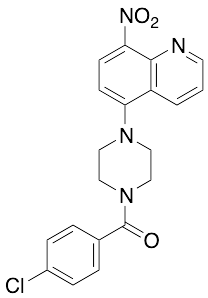
B2
$237.19 Add to cart View Product DetailsMolecular Formula : C20H17ClN4O3
-
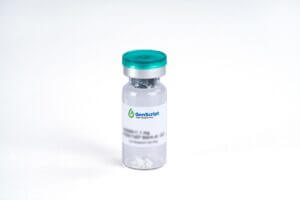
B7-1(CD80) Fc Chimera, Human
$1,035.00 Add to cart View Product DetailsB7-1/CD80 and B7-2/CD86, together with their receptors CD28 and CTLA-4, constitute one of the dominant co-stimulatory pathways that regulate T- and B-cell responses. Although both CTLA-4 and CD28 can bind to the same ligands, CTLA-4 binds to B7-1 and B7-2 with a 20-100 fold higher affinity than CD28 and is involved in the down-regulation of the immune response. Mature human B7-1 consists of a 208 amino acid extracellular domain (ECD) with two immunoglobulin-like domains, a 21 amino acid transmembrane domain, and a 25 amino acid cytoplasmic domain. Both human and mouse B7-1 and B7-2 can bind to either human or mouse CD28 and sCTLA-4. B7-1 is expressed on activated B cells, activated T cells, and macrophages. B7-2 is constitutively expressed on interdigitating dendritic cells, Langerhans cells, peripheral blood dendritic cells, memory B cells, and germinal center B cells.
-
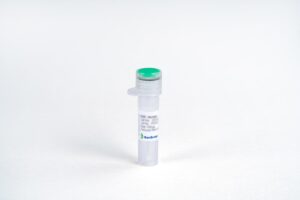
B7-2/CD86 Fc Chimera, Human
$1,035.00 Add to cart View Product DetailsB7-1 and B7-2 are homologous costimulatory ligands expressed on the surface of antigen presenting cells (APCs), both are type 1 transmembrane proteins with a membrane distal IgV and a membrane proximal IgC domain. They share ~25% sequence homology and interact with the same receptors, CD28 and CTLA-4.Binding of these molecules to the T cell costimulatory receptors, CD28 and CTLA-4, is essential for the activation and regulation of T cell immunity. T cell activation requires engagement of the T cell receptor (TCR) with the peptide–MHC complex presented on the cell surface of antigen presenting cells (APCs). In addition to this antigen-specific interaction, a second interaction involving costimulatory receptors (CD28, ICOS) on T cells and their respective ligands (B7-1/B7-2, ICOS-L) on APCs is required for optimal T cell activation. B7-1 and B7-2 may also function to deliver signal into dendritic cells. While B7-1 favors binding to CTLA-4, B7-2 shows a preference for CD28.
-

B7-H3 Fc Chimera, Human
$1,035.00 Add to cart View Product DetailsHuman B7 homolog 3 (B7-H3), a member of the immunoglobulin superfamily, is also known CD276, which contains two Ig-like C2-type (immunoglobulin-like) domains and two Ig-like V-type (immunoglobulin-like) domains. B7-H3 may participate in the regulation of T-cell-mediated immune response. B7-H3 also plays a protective role in tumor cells by inhibiting natural-killer mediated cell lysis as well as a role of marker for detection of neuroblastoma cells. Furthermore, B7-H3 is involved in the development of acute and chronic transplant rejection and in the regulation of lymphocytic activity at mucosal surfaces. Human B7-H3 does not bind any known members of the CD28 family of immunoreceptor. However, B7-H3 has been shown to bind an unidentified counter-receptor on activated T cells to co-stimulate the proliferation of CD4+ or CD8+ T cells. B7-H3 has also been found to enhance the induction of primary cytotoxic T lymphocytes and stimulate IFN-gamma production.
-

B7-H3, His, Human
$1,293.75 Add to cart View Product DetailsHuman B7 homolog 3 (B7-H3), a member of the immunoglobulin superfamily, is also known CD276, which contains two Ig-like C2-type (immunoglobulin-like) domains and two Ig-like V-type (immunoglobulin-like) domains. B7-H3 may participate in the regulation of T-cell-mediated immune response. B7-H3 also plays a protective role in tumor cells by inhibiting natural-killer mediated cell lysis as well as a role of marker for detection of neuroblastoma cells. Furthermore, B7-H3 is involved in the development of acute and chronic transplant rejection and in the regulation of lymphocytic activity at mucosal surfaces. Human B7-H3 does not bind any known members of the CD28 family of immunoreceptor. However, B7-H3 has been shown to bind an unidentified counter-receptor on activated T cells to costimulate the proliferation of CD4+ or CD8+ T cells. B7-H3 has also been found to enhance the induction of primary cytotoxic T lymphocytes and stimulate IFN-gamma production.
-

Baclofen-d4
$332.93 Add to cart View Product DetailsMolecular Formula : C10 2H4 H8 Cl N O2
-
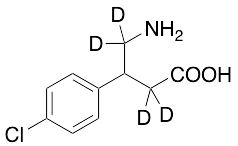
Baclofen-d4 (Major)
$176.81 Add to cart View Product DetailsMolecular Formula : C10 2H4 H8 Cl N O2
-

BAFF-R, Human
$1,086.75 Add to cart View Product DetailsBAFF Receptor (BAFF-R), a member of the TNFR superfamily, is highly expressed in spleen, lymph node, and resting B cells and to some extent in activated B cells, resting CD4+ cells and peripheral blood leukocytes. BAFF-R is a type III transmembrane protein that binds with high specificity to BAFF (TNFSF13B). BAFF-R/BAFF signaling plays a critical role in B cell survival and maturation.
-

BAFF, Human
$1,651.69 Add to cart View Product DetailsB-cell activating factor, also known as BAFF, TALL-1, TNAK, and zTNF4, is a member of theTNF ligand superfamily designated TNFSF13B. Produced by macrophages, dendritic cells, and T lymphocytes, BAFF promotes the survival of B cells and is essential for B cell maturation. BAFF binds to three TNF receptor superfamily members: B-cell maturation antigen (BCMA/TNFRSF17), transmembrane activator and calcium-modulator and cyclophilin ligand interactor (TACI/TNFRSF13B) and BAFF receptor (BAFF R/BR3/TNFRSF 13C). These receptors are type III transmembrane proteins lacking a signal peptide. Whereas TACI and BCMA bind BAFF and another TNF superfamily ligand, APRIL(a proliferation-inducing ligand), BAFF R selectively binds BAFF. The BAFF R extracellular domain lacks the TNF receptor canonical cysteine-rich domain (CRD) and contains only a partial CRD with four cysteine residues. Human and mouse BAFF R share 56% aa sequence identity. BAFF R is highly expressed in spleen, lymph node and resting B cells. It is also expressed at lower levels in activated B cell, resting CD4+ T cells, thymus and peripheral blood leukocytes.
-

Bamifylline
$87.98 Add to cart View Product DetailsMolecular Formula : C20H27N5O3
-
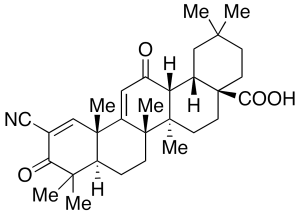
Bardoxolone
$72.45 Add to cart View Product DetailsMolecular Formula : C31H41NO4
-

BAY-1895344
$62.10 Add to cart View Product DetailsMolecular Formula : C20H21N7O
-

BAY-876
$51.75 Add to cart View Product DetailsMolecular Formula : C24H16F4N6O2
-

Bazedoxifene N-Oxide
$131.10 Add to cart View Product DetailsMolecular Formula : C30 H34 N2 O4
-
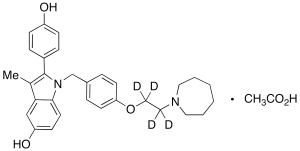
Bazedoxifene-d4
$262.20 Add to cart View Product DetailsMolecular Formula : C30 H30 D4 N2 O3
-
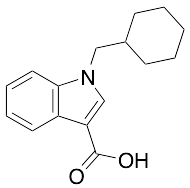
BB-22 3-Carboxyindole Metabolite
$88.84 Add to cart View Product DetailsMolecular Formula : C16H19NO2
-

BCA-1/CXCL13, Human
$2,018.25 Add to cart View Product DetailsCXCL13, also known as B-lymphocyte chemoattractant (BLC), is a CXC chemokine that is constitutively expressed in secondary lymphoid organs. BCA-1 cDNA encodes a protein of 109 amino acid residues with a leader sequence of 22 residues. Mature human BCA-1 shares 64% amino acid sequence similarity with the mouse protein and 23 – 34% amino acid sequence identity with other known CXC chemokines. Recombinant or chemically synthesized BCA-1 is a potent chemoattractant for B lymphocytes but not T lymphocytes, monocytes or neutrophils. BLR1, a G protein-coupled receptor originally isolated from Burkitt’s lymphoma cells, has now been shown to be the specific receptor for BCA-1. Among cells of the hematopoietic lineages, the expression of BLR1, now designated CXCR5, is restricted to B lymphocytes and a subpopulation of T helper memory cells. Mice lacking BLR1 have been shown to lack inguinal lymph nodes. These mice were also found to have impaired development of Peyer’s patches and defective formation of primary follicles and germinal centers in the spleen as a result of the inability of B lymphocytes to migrate into B cell areas.
-

BCMA, Human
$3,458.63 Add to cart View Product DetailsBCMA, a member of the TNF receptor superfamily, binds to BAFF and APRIL. BCMA is expressed on mature B-cells and other B-cell lines and plays an important role in B cell development, function and regulation. BCMA also has the capability to activate NF-kappaB and JNK. The human BCMA gene codes for a 184 amino acid type I transmembrane protein, which contains a 54 amino acid extracellular domain, a 23 amino acid transmembrane domain, and a 107 amino acid extracellular domain.
-
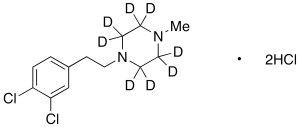
BD 1063-d8 Dihydrochloride
$214.76 Add to cart View Product DetailsMolecular Formula : C13 D8 H10 Cl2 N2
-

BD-1, Human
$2,238.19 Add to cart View Product DetailsDefensins (alpha and beta) are cationic peptides with a broad spectrum of antimicrobial activity that comprise an important arm of the innate immune system. The α-defensins are distinguished from the β-defensins by the pairing of their three disulfide bonds. To date, four human β-defensins have been identified; BD-1, BD-2, BD-3 and BD-4. β-defensins are expressed on some leukocytes and at epithelial surfaces. In addition to their direct antimicrobial activities, they are chemoattractant towards immature dendritic cells and memory T cells. The β-defensin proteins are expressed as the C-terminal portion of precursors and are released by proteolytic cleavage of a signal sequence and, in the case of BD-1 (36 a.a.), a propeptide region. β-defensins contain a six-cysteine motif that forms three intra-molecular disulfide bonds. β-Defensins are 3-5 kDa peptides ranging in size from 33-47 amino acid residues.
-

BD-2, Human
$2,018.25 Add to cart View Product DetailsDefensins (alpha and beta) are cationic peptides with a broad spectrum of antimicrobial activity that comprise an important arm of the innate immune system. The α-defensins are distinguished from the β-defensins by the pairing of their three disulfide bonds. To date, four human β-defensins have been identified; BD-1, BD-2, BD-3 and BD-4. β-defensins are expressed on some leukocytes and at epithelial surfaces. In addition to their direct antimicrobial activities, they are chemoattractant towards immature dendritic cells and memory T cells. The β-defensin proteins are expressed as the C-terminal portion of precursors and are released by proteolytic cleavage of a signal sequence and, in the case of BD-1 (36 a.a.), a propeptide region. β-defensins contain a six-cysteine motif that forms three intra-molecular disulfide bonds. β-Defensins are 3-5 kDa peptides ranging in size from 33-47 amino acid residues.
-

BD-3, Human
$2,190.75 Add to cart View Product DetailsDefensins (alpha and beta) are cationic peptides with a broad spectrum of antimicrobial activity that comprise an important arm of the innate immune system. The α-defensins are distinguished from the β-defensins by the pairing of their three disulfide bonds. To date, four human β-defensins have been identified; BD-1, BD-2, BD-3 and BD-4. β-defensins are expressed on some leukocytes and at epithelial surfaces. In addition to their direct antimicrobial activities, they are chemoattractant towards immature dendritic cells and memory T cells. The β-defensin proteins are expressed as the C-terminal portion of precursors and are released by proteolytic cleavage of a signal sequence and, in the case of BD-1 (36 a.a.), a propeptide region. β-defensins contain a six-cysteine motif that forms three intra-molecular disulfide bonds. β-Defensins are 3-5 kDa peptides ranging in size from 33-47 amino acid residues.






